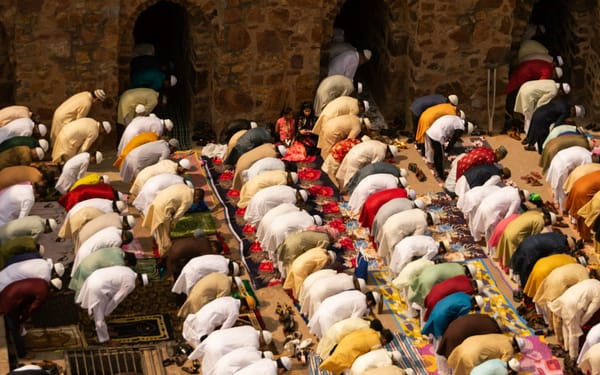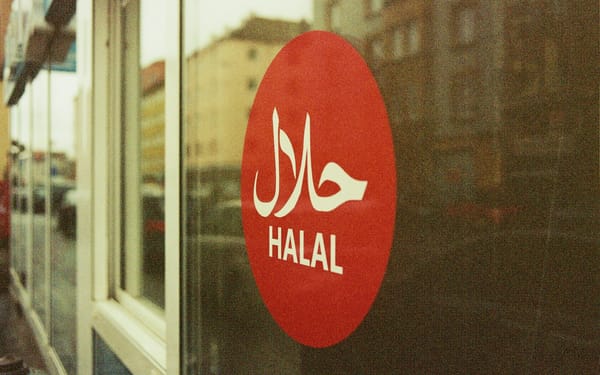Muslim Wedding Traditions Across Five Countries

Weddings are about families coming together, honoring culture and religion and improving the standard of living. Islam is strict about marriage, and weddings are always beautiful. Muslim wedding traditions are passed down from generation to generation. However, understanding halal wedding traditions across the region is essential.
It's more of a way to explore other cultures and heritage. Also, it can give you an idea of what to expect when going to a similar wedding. Most Muslim weddings have a few things in common, including the Nikah, the presentation of Mahr, and the reception.
Let's check out Muslim wedding traditions across these five Muslim-majority countries.
1. Morocco
Before the wedding ceremony, The Moroccans have a day called Drib Sdak, when the bride and groom sign their marriage contract in the presence of their families and an auxiliary of Justice (Adoul).
Halal weddings in Morocco usually last for about three days. The first day is the Hammam bath. The bride invites her friends and relatives to have a steam bath- called Hammam in the Middle East. The activity comes with a lot of gist, giggling, and gossip. It's an excellent way for the bride to bond with her friends before marriage.
The Henna party takes place on the second day. It's an only women's event, and the bride paints henna on her arms and legs. The Moroccan believes that Henna stands for optimism and fertility.
The wedding ceremony takes place on the third day. The bride and groom sit in the Amaria - a decorated platform held by three to four people. The ceremony is filled with traditional Moroccan dresses, jewelry, music, and sweets. The bride wears up to 7 outfits during the wedding.
Some are the green and gold kaftan for the Henna event, a White Takchita, which stands for Purity at the onset of the wedding ceremony, the Faassiya dress for the Maria tour, a Sahraouia, etc.
2. Malaysia
Muslim wedding traditions in Malaysia start with a proposal. The potential groom sends a representative to the future bride's house. The envoy goes with gifts since it's a formal visit. The proposal is called Adat Merisik.
The woman's family deliberates on the proposal for a few days, and the man's representative returns to get their response. If the woman's family accept, the couple can move to the next stage. If not, the man's family will respect their decision and move on.
The next wedding stage is the engagement ceremony, which takes place in the bride's home. The groom's family presents gifts to the bride’s family, the couples exchange rings as a sign of commitment, and they get to know each other more. Before the wedding day, there's also a gift exchange between the two families, henna night and Nikkah.
The wedding day traditions include ring exchange, sitting-in-state ritual, which involves the couple sitting on a decorated dais wearing traditional Malay outfits and the Reconciliation feast, which takes place at the bride's home. It's usually lunch; the two families eat together, and the couples introduce their families.
3. Somalia
Weddings are exciting and exceptional in Somalia. The festivities last three nights and are accompanied by singing, dancing, and celebration. Among the night celebrations is a special one called Gaaf.
It's an event whereby the couple's relatives from far and near come together to read poems, answer riddles and sing throughout the night. The Somali prepare grand feasts for their guests during weddings. Different traditional and modern dishes are often served. The gift exchange is also a significant part of halal wedding traditions in Somalia.
The exchange is typically between the bride's and groom's family and between the guests and the couples. The Nikah is also part of the wedding rituals in Somalia.
The imam often anchors it, and he gives his blessings to the couples. During the traditional Somali wedding event, the couples verbally accept marriage and exchange rings as a symbol of unity.
4. Turkey
Like other regions, halal weddings are unique in Turkey. Traditional weddings come with plenty of excitement, customs, and traditions. Weddings are usually prevalent around May, August, and September in Turkey.
Some wedding traditions in Turkey include the Henna night, where henna is applied on the bride's hand and the groom's pinky finger. Henna serves as a symbol of devotion in Turkey and is believed to ward off evil.
In Turkey, the future bride is made to show her remorse about departing her family by crying. The Henna night also includes the mother-in-law giving the prospective bride a good coin as a henna gift.
The gold adorning ceremony is where family and friends give newlyweds gold to support the couple's new life. Another tradition in Turkey is for strings of sparkling tinsels to be adorned to the bride. The single ladies pull from these tinsels. It's believed that the shorter the tinsel, the closer their marriage.
5. Egypt
Weddings in Egypt are beautiful, fascinating, and captivating. Their rituals usually start with an engagement, which includes the groom giving the bride gold as a gift and paying her Mahr to the family.
The first Muslim wedding tradition in Egypt is the Nikkah, which frequently occurs at the mosque. It can occur a few days before the wedding or on the same day as the wedding. The couple exchange oaths and sign the marriage contract drawn during the engagement.
The imam registers the marriage with the government, then the bride and groom's fathers join hands, reread the contract and Suratul Fathiah. A feast then follows. The wedding takes place on Thursday in Egypt, and the Mahr is given to the bride.
The wedding is often filled with songs, gift exchange and throwing of rice and grains at the couples. Also, the couples exchange gifts at the engagement.
Bottom line
We've explored Muslim wedding traditions across five different countries. So, we've seen the similar Islamic traditions and the peculiar events. Halal weddings are exciting; exploring them is an excellent way to learn about different cultures. We hope you've learned a thing or two, and it'll be helpful for your next wedding invitation.





